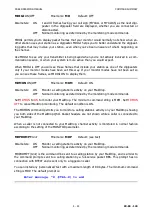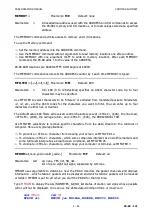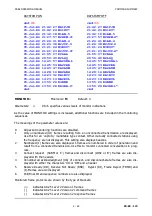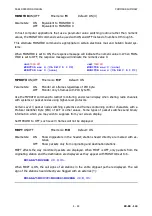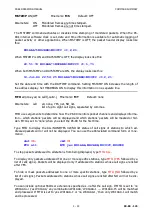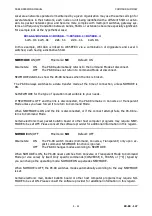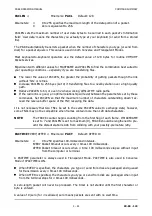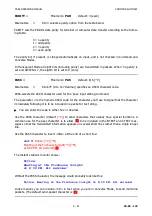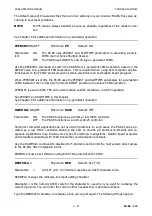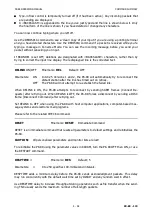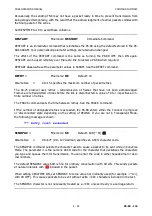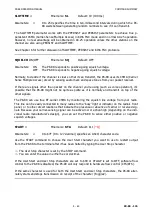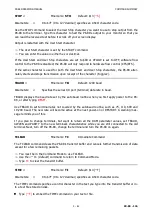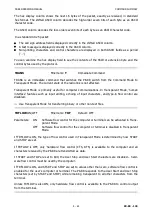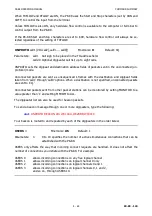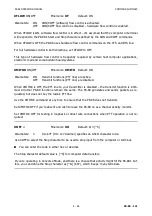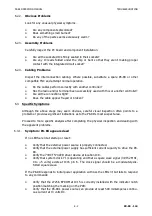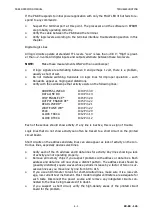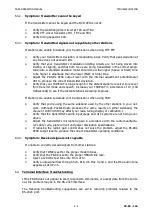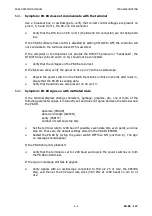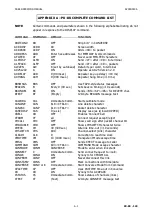
PK-88 OPERATING MANUAL
COMMAND SUMMARY
5 - 59
PK-88 - 134
Occasionally, the sending TNC may not have a packet ready in time to prevent transmission from
being stopped temporarily, with the result that the acknowledgment of earlier packets collides with
the final packet of the series.
Set RESPTIME to 10 to avoid these collisions.
RESTART
Mnemonic:
RESTART
Immediate Command
RESTART is an immediate command that reinitializes the PK-88 using the defaults stored in the PK-
88's bbRAM. Your personalized parameter settings are retained unchanged.
The effect of the RESTART command is the same as turning the PK-88 OFF, then ON again.
RESTART can be used remotely over the radio link to restart a PK-88 when required.
RESTART does not reset the parameter values in bbRAM. See the RESET command.
RETRY
n
Mnemonic:
RE
Default: 10
Parameters:
n
0 to 15 specifies the maximum number of packet retries.
The AX.25 protocol uses retries – retransmission of frames that have not been acknowledged.
Frames are retransmitted
n
times before the link is disconnected. A value of 0 for
n
specifies an in-
finite number of retries.
The FRACK command sets the time between retries. See the FRACK command.
If the number of designated retries is exceeded, the PK-88 enters either the 'connect in progress'
or 'disconnected' state depending on the setting of RELINK. If you are not in Transparent Mode,
the following message is shown:
*** Retry count exceeded
SENDPAC
n
Mnemonic:
SE
Default: $0D [^M] [
↵
]
Parameters:
n
0 to $7F (0 to 127 decimal) specifies an ASCII character code.
The SENDPAC command selects the character used to cause a packet to be sent while in Converse
Mode. The parameter
n
is the numeric ASCII code for the character that packetizes the characters
you type and queues them for transmission. You can enter the code in either hexadecimal or deci-
mal numbers.
The default SENDPAC value $0D is fine for ordinary conversation with CR ON. This sends packets
at natural intervals with
[
↵
]
included in the packet.
When setting CPACTIME ON, set SENDPAC to some value not ordinarily used (for example <^A>),
with CR OFF). This causes packets to be sent without extra <CR> characters included in the text.
The SENDPAC character is not necessarily treated as a <CR> unless it really is a carriage return.

